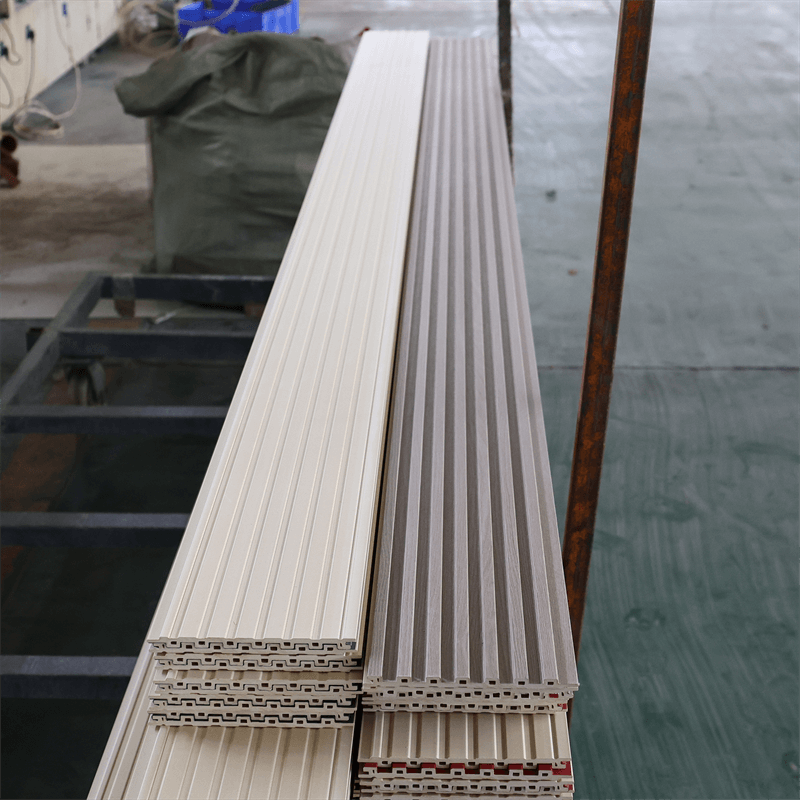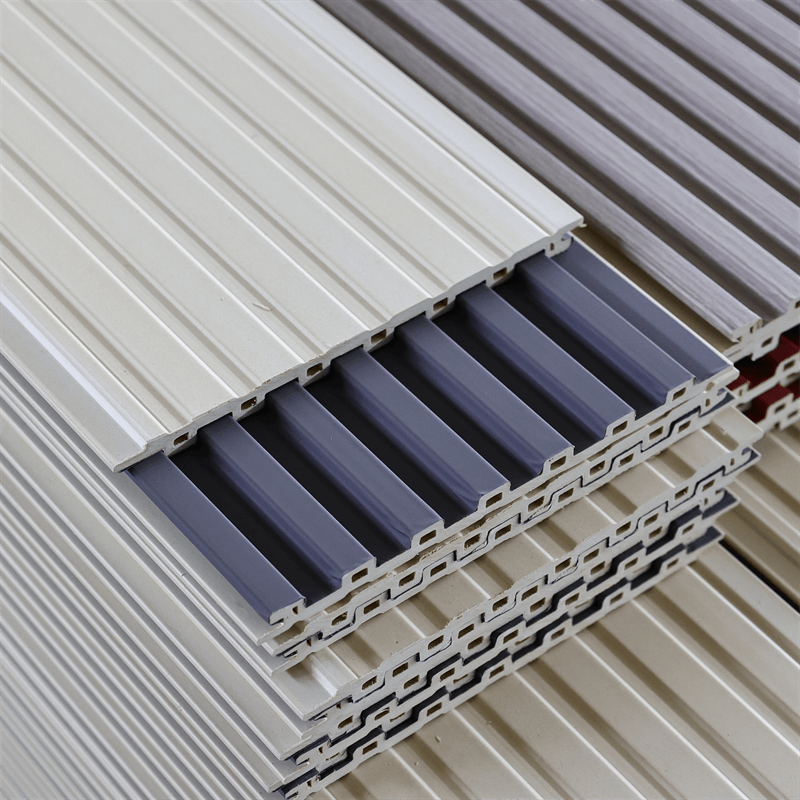Choosing the right materials for wall panels is a crucial decision that homeowners and designers face.
It involves weighing the advantages and disadvantages of WPC (Wood Plastic Composite) panels against traditional materials.
In this essay, we will explore the key factors to consider when making this choice, focusing on aesthetics, durability, sustainability, and installation convenience.
By examining these aspects, you can make an informed decision that suits your specific needs and preferences.

I. Aesthetics: Balancing Beauty and Versatility
WPC Wall Panels:
WPC panels offer a natural wood look that creates a warm and inviting ambiance.
With a wide range of grain patterns, colors, and textures, they provide versatility in design.
Whether you prefer a rustic or contemporary style, WPC panels can be customized to suit your vision.
The natural wood appearance adds character and charm to any space, making it an appealing choice for those seeking a warm and cozy atmosphere.
Traditional Materials:
Traditional materials, such as wood, brick, or stone, carry a sense of classic elegance.
They exude sophistication and lend authenticity to the architectural style of a home.
Wood panels offer a warm and inviting feel, while brick and stone provide a timeless appeal.
The variety of textures, colors, and finishes available with traditional materials allows for creative freedom and the ability to customize the look according to personal preferences.
II. Durability: Ensuring Longevity and Low Maintenance
WPC Wall Panels:
One of the key advantages of WPC panels is their high resistance to moisture.
Unlike wood, they do not warp, rot, or attract insects, ensuring long-lasting durability.
This makes WPC panels an excellent choice for areas prone to humidity, such as bathrooms and kitchens.
Additionally, WPC panels require minimal maintenance, as they do not need to be sealed, stained, or painted regularly.
This saves both time and effort, making them a convenient option for homeowners seeking low-maintenance solutions.
Traditional Materials:
Traditional materials, particularly brick and stone, are known for their strength and durability.
They can withstand impact, extreme weather conditions, and the test of time. However, wood panels may require more maintenance to preserve their durability.
Regular sealing, staining, or painting may be necessary to protect the wood from moisture and ensure its longevity.
While traditional materials offer durability, they may require more ongoing maintenance compared to WPC panels.
III. Sustainability: Eco-Friendly Considerations
WPC Wall Panels:
One of the significant advantages of WPC panels is their sustainable composition.
They are typically made from recycled wood fibers and plastic materials, contributing to the reduction of waste and deforestation.
By using recycled materials, WPC panels promote a more environmentally friendly approach to construction and help reduce the demand for virgin resources.
Additionally, the manufacturing process of WPC panels consumes fewer natural resources compared to traditional wall materials, further supporting sustainability.
Traditional Materials:
The sustainability aspect of traditional materials depends on their sourcing and production methods.
For example, choosing reclaimed wood or locally sourced materials can help reduce the carbon footprint associated with transportation.
However, it is essential to consider the environmental impact of extraction and manufacturing processes.
Traditional materials like brick and stone often require significant energy and resources for production, which may have a higher environmental impact compared to WPC panels.
IV. Installation Convenience: Time, Effort, and Cost Considerations
WPC Wall Panels:
WPC panels are designed for easy installation, often featuring a tongue-and-groove system or interlocking mechanism.
This allows for a straightforward and hassle-free assembly process.
The lightweight nature of WPC panels makes handling and installation more convenient, saving both time and labor costs.
Additionally, the ease of installation means that homeowners with basic DIY skills can undertake the project themselves, further reducing installation expenses.
Traditional Materials:
The installation of traditional materials, such as brick or stone, often requires skilled labor and specialized knowledge.
Processes such as mortar application, grouting, or precise measurements may be involved.
Depending on the complexity of the design and the skill level required, the installation time and cost can vary.
Hiring professionals for the installation of traditional materials may be necessary, which can add to the overall project expenses.

Choosing between WPC wall panels and traditional materials requires careful consideration of various factors.
WPC panels offer the advantage of a natural wood look, customization options, moisture resistance, and a sustainable composition.
They also provide low maintenance requirements and easy installation, making them a convenient choice for homeowners.
On the other hand, traditional materials offer classic elegance, strength, and durability, although they may require more ongoing maintenance and specialized installation expertise.
Ultimately, the right choice depends on your specific needs, budget, and design preferences.
Consider factors such as the desired aesthetic, durability requirements, environmental impact, and installation convenience.
By evaluating these aspects, you can make an informed decision that aligns with your vision and values.
Whether you opt for the contemporary appeal of WPC wall panels or the timeless charm of traditional materials, both options offer unique benefits to enhance your living space.

